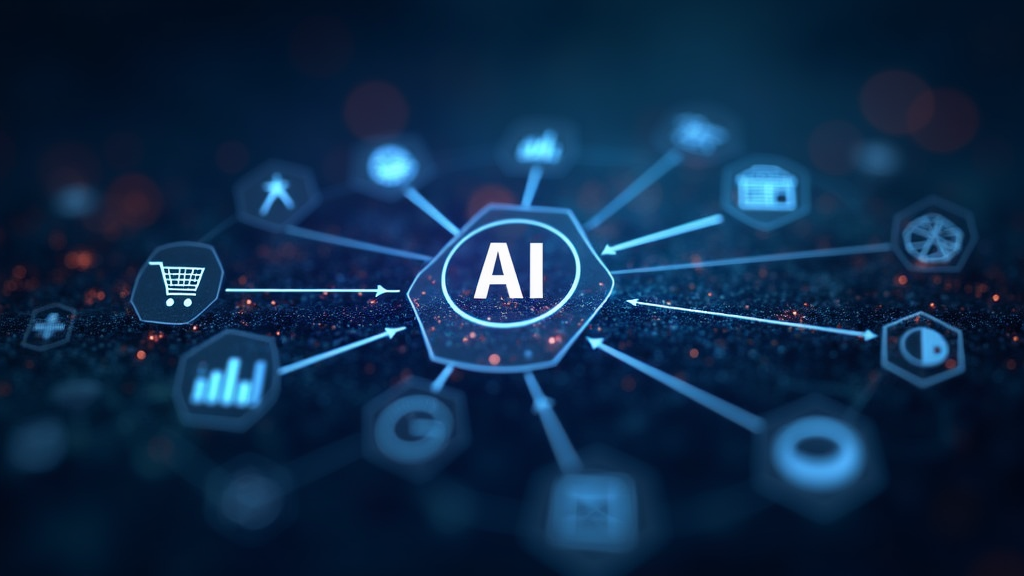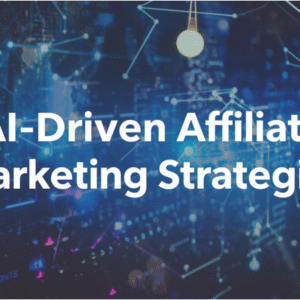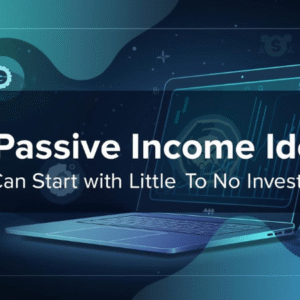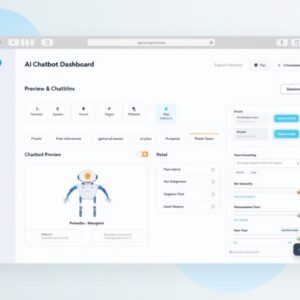Affiliate marketing has come a long way since the days of banners and basic tracking links. With the rise of artificial intelligence (AI), the way people approach promoting products, connecting with audiences, and optimizing performance is changing fast. I’ve been working in the affiliate space for years, and I’m genuinely excited about how AI keeps raising the bar, not just for those running affiliate programs, but also for everyday marketers looking to get better results with less fuss. Whether you’re new to the game or looking to future-proof your strategies, knowing what’s just around the corner can help you make smarter moves and stay ahead of trends.
How AI Is Transforming Affiliate Marketing
AI is shaking up the affiliate marketing world in more ways than most people realize. Back in the day, affiliates relied a lot on trial and error. Now, smart algorithms are helping partners find out what works faster, with far less guesswork. AI can analyze huge piles of data, spotting patterns or gaps others might miss, and automating repetitive jobs, freeing up more time for creative work or relationship building. It even makes campaign optimization more precise, as it adapts on the go to seasonal changes or audience behaviors.
The growth of AI in this space is pretty easy to track. Research from Statista shows that global spending on AI in marketing was expected to hit over $107 billion in 2028, up from just under $16 billion in 2021.
Affiliate networks and SaaS companies add more AI-powered features all the time, so it’s no longer about having a simple dashboard. These days, you get a central hub where intelligent software does most of the heavy lifting behind the scenes, whether it’s campaign optimization or monitoring compliance.
From a practical angle, this means affiliates get smarter predictions for which offers to run, autooptimized ad placements, personalized landing pages, and even automated content that still feels authentic. It opens doors for smaller marketers and new niches too, as clever tools level the playing field. Plus, smarter data insights help marketers adapt faster and spend more time brainstorming fresh ideas.
Turn Your Passion into Earnings
Get the Tools, Training and Support you need. All in One Place
Join a a Vibrant and Global Community of
Marketers and Entrepreneurs from Around the World
AI-Powered Tools Every Affiliate Should Know
A lot of the new AI features cropping up in affiliate marketing are actually pretty handy once you get used to them. Here’s a quick breakdown of the types of tools I’ve seen making a real difference lately:
- AI Content Generators: These help you produce blog posts, product reviews, social media snippets, and even video scripts a lot faster than before. With the right prompts and some light editing, you can put out more quality content and scale up without feeling stretched too thin.
- Predictive Analytics Platforms: Instead of just looking at what worked last week, predictive analytics spots trends and opportunities before they take off. You get tailored advice on which offers or audiences to focus on. These tools often look through historical performance and forecast what’s next, saving you the trouble of extended manual analysis.
- Smart Ad Optimization: AI-powered ad managers automatically shift budgets, test new creatives, and tweak bids for you around the clock, so you get the best return without being stuck staring at stats all day long. These platforms can even pause underperforming ads instantly.
- Recommendation Engines: These analyze user behavior and past conversions to recommend the best products for your audience, so your suggestions feel spot-on and boost click rates. They help you increase relevance with every suggestion.
- Chatbots and AI Assistants: On affiliate sites, smart bots now handle lead capture, answer basic questions, and move visitors further down the funnel while you sleep. Adding a chatbot to your landing page or review site can make visitors feel heard and increase conversions 24/7.
Getting comfortable with these tools means you spend less time grinding through the basics and more time planning creative ways to reach and help your audience. For beginners and pros alike, trying out just one or two of these tools can free up valuable energy for other aspects of your business.
Key AI Trends Shaping the Future of Affiliate Marketing
It’s easy to feel overwhelmed by all the buzzwords, but a few AI trends are especially useful for affiliates who want to stay prepared for what’s coming.
- Deeper Personalization: AI allows for hyperpersonalization, showing different offers or recommendations to every user based on real-time behavior, interests, and where they came from. Conversion rates can climb because messages feel way more relevant and help foster stronger loyalty with visitors.
- Voice and Visual Search: With the rise of voice assistants (like Alexa or Google Assistant) and tools that let people search using photos, content targeting is changing. Affiliates who optimize for these new searches with the help of AI will have a better shot at snatching traffic before others realize it.
- Smarter Attribution Models: Traditional last click models are getting smarter thanks to AI. Attribution tools can now follow the winding paths buyers take much more accurately, giving credit to every touchpoint along the way. This helps affiliates see which of their efforts actually move the needle.
- Fraud Detection: AI-based fraud detection tools can spot sketchy clicks, fake signups, and bot activity better than older systems, helping everyone save time and money. These tools keep campaigns safer and help networks protect their credibility.
Getting ready for these trends doesn’t have to be complicated, but being aware of them helps you invest in the right areas and ask the right questions when picking software or networks. Keeping up with the fast pace of AI development means you can shift your strategies and maintain a strong position.
Practical Steps for Affiliates to Start Using AI
Jumping into AI-driven affiliate marketing isn’t as technical as it sounds, especially with so many userfriendly tools out there. Here are some steps I recommend to get started:
- Pick an AI Tool That Matches Your Workflow: Start with just one, like an AI-powered content writer or analytics platform that plugs into your current tracking system. Give yourself time to experiment before adding more.
- Let Predictive Insights Guide Your Campaigns: Use AI data to figure out which products are likely to trend or which audiences are warming up. Pivot campaigns as needed for better conversion rates and try targeting new markets informed by analytics.
- Automate Routine Tasks: Look for areas where repeating steps take up too much time, for example, scheduling posts, running AB tests, or sorting email lists, and hand those off to AI tools so you can focus on big picture projects. Even automating your reporting can save hours each week.
- Stay Flexible and Keep Testing: AI works best with fresh data, so keep testing and feeding it updated info. Don’t be afraid to pull the plug on what isn’t working; these tools can help you spot underperformers before you sink too much time in.
Even making one small change, such as using AI to draft headlines or set ad budgets on autopilot, can save hours and sharpen your edge in a crowded field. A steady approach to AI adoption, where you test before wide use, often brings the best results.
What Brands and Networks Can Do With AI
It’s not just affiliates who benefit here. Brands and affiliate networks are starting to use AI to improve relationships, spot promising partners, and run tighter campaigns. That means more data-driven insights and better resources for everyone on the team.
- MachineLearning Affiliate Recruitment: Networks use AI to search for publishers with the right audiences and approach them automatically, reducing manual scout work and finding partners a lot faster. This creates opportunities for both sides to connect and expand reach more efficiently.
- Automated Compliance Monitoring: Smart scanning makes it easier to make sure affiliates are sticking to rules. For example, checking coupon codes, brand mentions, and ad placements in real time. This means fewer mistakes and quicker reactions to problems that crop up.
- Dynamic Commission Structures: Using conversion data, AI can suggest new commission rates or promotions on the fly, rewarding affiliates who bring in quality traffic or high-value buyers. This real-time approach helps affiliates feel appreciated and incentivizes better performance.
Everyone gets access to better analytics, faster support, and tools that help them earn more without extra paperwork. This is especially solid for affiliates who work across several verticals or niches, allowing for easier tracking and management.
Common Challenges With AI in Affiliate Marketing
It’s not all smooth sailing with AI, and I’ve noticed a few sticking points where affiliates and brands run into issues:
- Learning Curve: New tools sometimes come with too many features or a confusing setup. If you’re just starting out, look for platforms with helpful tutorials or built-in onboarding. Some even offer live support to get you up and running quickly.
- Quality Control: Sometimes AI-generated content or recommendations miss the mark. Always review automated content and keep personal touches where it counts. Make sure any reviews or product blurbs sound natural and truthful.
- Privacy Concerns: Personalized marketing and heavy data use can make privacy a concern. Affiliates should stay aware of changing data laws (like GDPR or CCPA) and always play it safe when collecting info. Maintaining audience trust is as important as landing conversions.
The smartest approach is to treat AI tools as helpful sidekicks, not total replacements for your judgment or experience. Keep an eye on analytics and stay involved to avoid costly mistakes. Learning the basics of how these tools make decisions also lets you catch errors before they cause bigger problems.
Quality Control In AI-Generated Content
Not every article or product blurb spun by AI will sound right. I always read through anything automated before hitting publish. Look for odd phrasing or incorrect facts; your reputation depends on it. Over time, you might even create a style guide for your AI tools to follow, making your content more reliable.
Finding Your Way Through New Data Regulations
With more talk of data privacy, it’s really important to use tools that clearly explain how they gather and use information. Check with networks about privacy updates regularly and link to a clear privacy policy on all affiliate content. Staying transparent doesn’t just keep you out of trouble—it also builds trust with your readers.
Tips for Making the Most of AI in Affiliate Marketing
AI is pretty powerful, but squeezing the best results from it means mixing tech with common sense and a little creativity. Here are a few simple tips that make a big difference:
- Always keep learning. AI tools change quickly, and staying curious means you’re ready when something better hits the market. Following tech blogs or participating in webinars can keep your knowledge fresh.
- Test, test, test. Try out different AI-powered features in small steps before rolling them out everywhere. This even applies to tweaking settings on existing tools, as small changes often yield big results.
- Keep analytics front and center. Use AI-generated reports to guide changes, but check them against your real-world experience. Trust your instincts when something feels off.
- Be transparent. Let audiences know when you use AI-driven recommendations or content. Modern readers appreciate honesty, and it keeps your brand approachable and real.
Combining thoughtful strategies with smart tech can help you build trust and grow your affiliate business sustainably. Having reliable systems in place makes it easier to scale up when you’re ready.
Looking for a training platform that actually works?
I’ve put together a full walkthrough of the affiliate marketing training that helped me build everything I have today. It’s practical, beginner-friendly, and you can try it out for free to see if it suits you.
Take a look at my honest review and see if it’s the right fit for you.
Frequently Asked Questions About AI and Affiliate Marketing
Curiosity is high as AI becomes a bigger part of digital marketing. Here are a few questions I see pop up most often:
Question: Can AI replace human affiliate marketers?
Answer: AI takes care of time-consuming analysis and busywork, but real relationships, strategy, and creativity still call for a human touch. Tech plus your own experience wins every time.
Question: Is AI only for big affiliate teams or networks?
Answer: Not at all. Plenty of low-cost or even free AI-powered tools work great for solo bloggers, small agencies, and single site operators. The scalability of these tools makes them useful for every skill level.
Question: What’s a good first AI tool to try?
Answer: An AI-powered content writer or a predictive analytics dashboard is a straightforward place to start. Both help you save time and run smarter campaigns, even without coding skills. Many platforms also provide trial periods so you can experiment before making a commitment.
Wrapping Up
AI is reshaping affiliate marketing and making a real impact, from automating simple jobs to opening up new methods for reaching audiences. Staying curious, trying out AI tools, and putting reliable strategies to use can help affiliates of all experience levels adapt fast and grow their earnings. Keeping a mix of tech and personal creativity creates an approach that stands up well for the future. The landscape is changing, so it’s worth getting comfortable with these new tools now. Your next breakthrough might be just a click away, and staying open to change is what helps you stand out in a rapidly shifting digital world.
Let’s make it happen!





